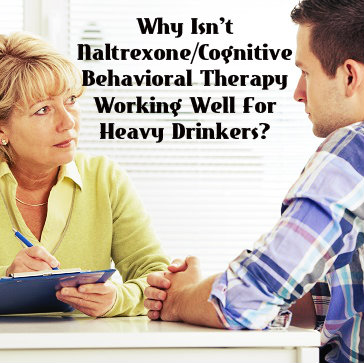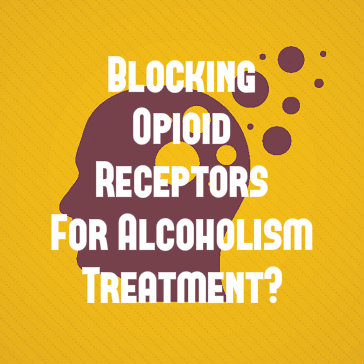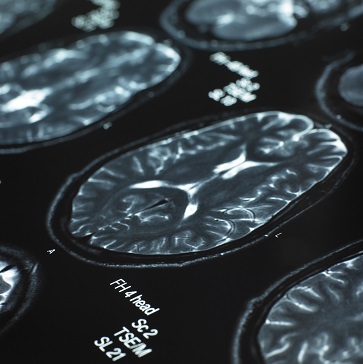Some people take the time to weigh the potential costs and benefits of participating in a given activity before deciding what to do. Social scientists and researchers refer to this forward-thinking outlook as a future orientation or a future-oriented time perspective. In a study scheduled for publication in July 2014 in the journal Addictive Behaviors, researchers from Canada’s University of Waterloo sought to determine how a future orientation helps predict the likelihood that any given person will succeed in the attempt to quit smoking. These researchers concluded that a couple of key factors help explain the smoking cessation-related benefits of a future-oriented time perspective.
Nicotine Addiction And Smoking Cessation
 According to figures compiled by the Centers for Disease Control and Prevention, most of the people who smoke cigarettes in the U.S. are physically dependent on nicotine, the main active ingredient in all types of tobacco. Unfortunately, for a number of reasons, nicotine dependence/addiction is fairly easy to acquire and fairly hard to overcome. Doctors, addiction specialists and public health officials refer to the attempt to stop smoking cigarettes as smoking cessation. More than two-thirds of American cigarette smokers openly express a desire to stop smoking entirely and establish a long-term nicotine-free lifestyle. In line with this fact, millions of Americans make an effort at smoking cessation every year; however relatively few people successfully quit smoking for more than a few days or weeks.
According to figures compiled by the Centers for Disease Control and Prevention, most of the people who smoke cigarettes in the U.S. are physically dependent on nicotine, the main active ingredient in all types of tobacco. Unfortunately, for a number of reasons, nicotine dependence/addiction is fairly easy to acquire and fairly hard to overcome. Doctors, addiction specialists and public health officials refer to the attempt to stop smoking cigarettes as smoking cessation. More than two-thirds of American cigarette smokers openly express a desire to stop smoking entirely and establish a long-term nicotine-free lifestyle. In line with this fact, millions of Americans make an effort at smoking cessation every year; however relatively few people successfully quit smoking for more than a few days or weeks.
There are several scientifically proven methods to increase the odds of achieving and maintaining smoking abstinence, including nicotine replacement therapy, use of non-nicotine-based medications such as Chantix (varenicline) or Zyban (buproprion), and non-medication-based approaches such as in-person or remotely delivered behavioral therapy and informative sessions called brief interventions. However, most people in the U.S. who try to quit smoking do not rely on one of these well-tested options.
Time Perspective And Future Orientation
As a rule, most people primarily focus their thoughts and actions on events that happened in the past, events happening in the present or events that may occur in the future. The frame of reference in use determines any given individual’s time perspective. Two of the time perspectives have a particular bearing on substance use, abuse and addiction: a hedonistic view of the present and a future-oriented perspective that emphasizes the benefits of delayed gratification. Generally speaking, people who have a hedonistic perspective on the present value impulsive actions and short-term rewards over carefully considered actions and long-term rewards. Conversely, people who have a future-oriented perspective value carefully considered actions and long-term rewards over impulsive actions and short-term rewards.
Time Perspective’s Impact On Smoking Cessation Success
Doctors and researchers know that people with a future-oriented perspective commonly receive long-term benefits in the form of improved or well-maintained health. Smoking cessation success is one of these potential health benefits. In the study published in Addictive Behaviors, the University of Waterloo researchers used a large-scale survey of smokers living in Canada, the U.S., Great Britain and Australia to investigate exactly why future orientation has a positive influence on smoking cessation attempts. All told, this survey included information from 9,772 people; it covered topics that included the day-to-day time perspective of each participant, each participant’s level of personal motivation to quit smoking, the number of quit attempts over an eight-year period of time and the relative success of any quit attempts during the same time frame.
After analyzing the survey results, the researchers confirmed that cigarette users with a future-oriented time perspective successfully quit smoking more often than their counterparts who don’t have a future-oriented perspective. When they looked at the underlying reasons for the different outcomes in the two types of smokers, they found that the future-oriented individuals who successfully stopped smoking typically had a higher level of motivation during the cessation process and sustained their active participation in this process for longer amounts of time.
The authors of the study published in Addictive Behaviors note that their project is the first attempt to explore the link between future orientation and smoking cessation success in current or recent smokers located in more than one country. In addition, they note that the link between a future-oriented time perspective and success in smoking cessation was found in all four countries under consideration. The study’s authors believe that the two factors uncovered during the study—heightened motivation and sustained participation during quit attempts—may be the main explanatory factors for the positive outcomes in future-oriented smokers.
How Stimulant And Smoking Addictions Can Be Treated Together
Call Us Now To Break Free From Your Addictions!
31 Jul 2014
The Downside Of Legalizing Marijuana
When examining the issue of marijuana legalization, pros and cons fill up both sides of the balance sheet. But while there may be some benefits to legalization, it should be noted that benefits of pot legalization do not directly translate to benefits of pot use. While the downsides and dangers of pot use are plentiful, that is a separate issue.
Marijuana – Not Harmless Or Equivalent To Medicine
 One of the primary cons of marijuana legalization is the mixed message it sends to users and potential users, especially teens. Proponents of marijuana legalization speak of health benefits or cite it as a treatment for chronic pain or for the relief of symptoms associated with chronic illnesses such as cancer, multiple sclerosis and even AIDS. This language takes marijuana out of the realm of “illicit drug” and into the category of “alternative medicine.” If not seen as a substance that promotes health, it will, at least be seen as harmless. Unfortunately marijuana is not harmless, nor is it akin to medicine.
One of the primary cons of marijuana legalization is the mixed message it sends to users and potential users, especially teens. Proponents of marijuana legalization speak of health benefits or cite it as a treatment for chronic pain or for the relief of symptoms associated with chronic illnesses such as cancer, multiple sclerosis and even AIDS. This language takes marijuana out of the realm of “illicit drug” and into the category of “alternative medicine.” If not seen as a substance that promotes health, it will, at least be seen as harmless. Unfortunately marijuana is not harmless, nor is it akin to medicine.
Though marijuana has been legalized in some states for medical use, that does not mean it has been approved by the FDA as a treatment for any sort of medical condition. Nor should it be linked with other non-FDA approved treatments and therapies such as herbal remedies, alternative medicines or vitamins. Regardless of its legal status, marijuana is a drug and it carries with it health risks and consequences. And voting to legalize it actually undermines the authority of the FDA, putting the task of approving drugs and medical treatments into the hands of voters and legislators.
High Risk For Dependence And Health Consequences
Questionable health benefits notwithstanding, people who use marijuana for medical or recreational purposes are building a relationship with a substance that carries a high risk of dependence and addiction. Using marijuana “medically” does not mean that one is exempt from short-term memory loss, that cognitive function is not impaired, that lung tissue is not damaged or that it may not become a gateway drug to more potent and dangerous substances.
Risks Outweigh Suggested “Benefits”
Those who oppose legalization continue to argue that any suggested benefits of marijuana use are far overshadowed by the risks and dangers. Anti-legalization doctors and scientists demonstrate that there are no measurable health benefits of marijuana use. The scientific research does not support the claims and adequate, reliable research has not been conducted. The conditions for which medical marijuana may be useful are broad and vague. Opponents also note that the legal, non-marijuana therapies currently on the market are more effective in treating the conditions for which pot is suggested
The cons of legalizing marijuana are many. Though marijuana may have some suggested (though not scientifically proven) health benefits, it is important to remember that those benefits come with risk as well. Legalization of marijuana not only sends the wrong message to young people about what is medicine and what isn’t, what is healthy and acceptable for use and what isn’t, it also may open the door to increased legalization of pot for recreational use. This in turn may lead to the demand for more hardcore illicit drugs, not to mention an increase in the national addiction epidemic.
Learn More About Drug Rehab Addiction News And Laws
A recent study from the University of California, San Diego (UCSD) found that men infected with HIV who use methamphetamine may experience faster T-cell activation and proliferation. In other words, the use of methamphetamine may cause HIV to progress more rapidly to AIDS.
Who Was Studied?
 The study looked at 50 men who have sex with men (MSM). The average age of the participants was 46, and each had been on retroviral medication for HIV for an average of four years. Forty-two percent of the participants were white, 20 percent were black and 4 percent were Hispanic.
The study looked at 50 men who have sex with men (MSM). The average age of the participants was 46, and each had been on retroviral medication for HIV for an average of four years. Forty-two percent of the participants were white, 20 percent were black and 4 percent were Hispanic.
Once a month for a year, the study participants completed a survey about their adherence to antiretroviral treatment and their use of various party drugs. Twenty of the men reported using marijuana during the study period, 16 used meth, 12 reported drinking alcohol, 11 used cocaine and 13 of the respondents used some other party drug.
The researchers also used frozen samples of a type of blood cell with a round nucleus known as peripheral blood mononuclear cells (PBMCs) to evaluate reservoirs of HIV DNA, cellular HIV RNA, and the activation and proliferation of immune cells named CD4 and CD8 (sometimes known as T-helper cells or T cells). HIV binds itself to CD4 cells, which multiply in order to help combat infection. In this way, the immune system actually makes more copies of the virus it is trying to destroy.
What The UCSD Study Found
The UCSD study found that the men who used meth had higher levels of activated and proliferating CD8 and CD8 cells, poorer CD4/CD8 ratios, and greater reservoirs of HIV DNA that had been incorporated into the genetic material of a host cell—proviral HIV DNA.
The study also found higher cytomegalovirus (CMV) load and shedding in the semen of meth users. While HIV is a sexually transmitted disease (STD), and sexual activity remains the leading cause of HIV transmission around the world, levels of HIV in the semen of an infected man are actually lower than the levels of HIV in the blood. However, HIV levels in semen are higher in a subgroup of men, and the UCSD study found that HIV levels in semen were more likely to be high in the men who used meth. A higher level of HIV in semen makes it more likely that an infected man could transmit the disease through unprotected intercourse. Previous studies have found that HIV transmission among meth users occurs at a higher rate than among other HIV-positive individuals.
Although the participants in this study reported a variety of recreational drug use, meth was the only drug that appeared to have any significant influence on T-cell activation and proliferation, and on levels of proviral HIV DNA.
In order to eliminate variables that could also explain the difference in the progression of HIV, the researchers selected MSM of a similar age, with similar baseline CD4 and CD8 counts, who had spent a similar amount of time on antiretroviral medications, and who were not infected with any other STDs that could contribute to the worsening of their HIV.
Researchers do not yet understand why the use of methamphetamine could speed the progression from HIV to AIDS or increase cognitive impairment among men with HIV. One possibility is that meth use corresponds with difficulty sticking to a regimen of anti-viral medication (although the men in this study who used meth reported similar rates of adherence as non-meth users). Risky behaviors common to meth users may also have something to do with speeding health deterioration among men with HIV.
However, the fact that the other recreational substances used by men in the study did not affect their HIV makes it somewhat less likely that risky behaviors associated with drug use will successfully explain the way meth affects HIV. It may be that there is some physiological cause and effect through which meth use directly promotes AIDS progression and increased cognitive deterioration.
If you or someone you love is struggling with a drug or alcohol addiction – Call us now – Help is available 24/7…It’s worth it!
Opioid maintenance treatment is a form of addiction treatment that uses opioid-based medications as safer substitutes for heroin or other powerful opioid substances of abuse. The two medications typically used in this kind of treatment are methadone and buprenorphine. In a study published in March 2014 in the journal Addiction, a multinational German and Swiss research team explored the potential usefulness of an opioid medication called slow-release oral morphine as an alternative to methadone in opioid maintenance treatment. These researchers concluded that slow-release oral morphine appears to be at least as effective as methadone in treating people with opioid use disorder.
Opioid Use Disorder And Medications
 People affected by opioid abuse or opioid addiction can receive a diagnosis for a condition officially known as opioid use disorder. Some addiction programs use opioid-based medications as temporary treatments for this disorder in order to help their patients/clients avoid the immediate pitfalls of opioid withdrawal. Others use opioid-based medications as longer-term alternatives for people affected by opioid use disorder.
People affected by opioid abuse or opioid addiction can receive a diagnosis for a condition officially known as opioid use disorder. Some addiction programs use opioid-based medications as temporary treatments for this disorder in order to help their patients/clients avoid the immediate pitfalls of opioid withdrawal. Others use opioid-based medications as longer-term alternatives for people affected by opioid use disorder.
Both methadone and buprenorphine produce their drug effects inside the brain more slowly than heroin and other commonly abused opioid substances. In addition, they have a lower maximum effect than the typical abused opioid. During opioid maintenance treatment, doctors rely on these characteristics to introduce either methadone or buprenorphine as an alternative to the unrestrained drug intake associated with unaddressed opioid addiction.
When used in this context, both medications allow addicted users to gain control over their drug intake while simultaneously evading the onset of severe opioid withdrawal. Methadone has a stronger opioid effect than buprenorphine and comes in the form of tablets or oral solutions. Buprenorphine is often combined with a second non-opioid medication called naloxone (which helps reduce any risks for buprenorphine abuse) and comes in the form of a tablet or strip placed under the tongue.
Slow-Release Oral Morphine
Morphine is one of the primary mind-altering substances found naturally in a plant called the opium poppy, which acts directly or indirectly as the originating source of all opioid drugs and medications. Pharmaceutical companies throughout the world manufacture purified forms of this substance as treatments for certain forms of mild and severe pain, including surgical pain and the pain associated with various forms of cancer.
Some forms of morphine pass rapidly to the brain after entering the bloodstream and have a relatively short-term impact on the ability to experience pain. Other forms are designed to pass into the brain slowly over an extended period of time and provide longer-term pain relief. Slow-release oral morphine, also known as extended-release morphine, is a specific type of long-acting morphine commonly prescribed for the treatment of significant pain that doctors expect to continue for prolonged amounts of time.
Slow-Release Oral Morphine’s Usefulness In Opioid Maintenance Treatment
In the study published in Addiction, researchers from six German institutions and one Swiss institution used a project involving 157 German and Swiss adults affected by opioid dependence/addiction to examine the usefulness of slow-release oral morphine in opioid maintenance treatment.
All of these individuals previously received methadone as part of their treatment; for a total of 22 weeks, some of the participants received slow-release oral morphine instead of methadone. The researchers monitored each individual’s continuing involvement in heroin use with two weekly urine drug tests and compared the results of the tests gathered from the methadone users to the results of the tests gathered from the slow-release morphine users.
After completing their comparisons, the researchers found that the slow-release morphine users were slightly more likely to test positive for heroin use during treatment than the methadone users. However, the difference between the two groups was minor and insignificant. The methadone users also had somewhat higher chances of remaining active participants in opioid maintenance treatment than the slow-release morphine users. However, the researchers again characterized the differences between the two groups as negligible. In addition, the group using slow-release morphine did not experience serious opioid-related harm during treatment any more often than the group using methadone.
Benefits Of Easier-Access Morphine For Opioid Maintenance Treatment
The authors of the study published in Addiction concluded that slow-release morphine is apparently just as useful in opioid maintenance treatment as methadone. This is important, in part, because federal guidelines restrict the places in which recovering addicts can receive methadone-based treatment. The authors note that the usefulness of slow-release morphine depends upon the amount of the medication used during opioid maintenance. As a rule, the number of heroin-positive urine tests drops as the amount of slow-release morphine given to a patient/client increases.
If You Or A Loved One Is Struggling With An Addiction…Don’t Give Up, Help Is Waiting – Call Us Now
22 Jul 2014
Why Do Heavy Drinkers Have A Lower Adherence To Naltrexone/Cognitive Behavioral Therapy?
Treatment programs for people affected by alcoholism commonly feature medications, some form of counseling or psychotherapy, or a combination of medication and counseling or psychotherapy. Together, a medication called naltrexone and a form of therapy called cognitive behavioral therapy have been shown to produce beneficial results in controlled testing. In a study published in March 2014 in The American Journal of Drug and Alcohol Abuse, researchers from two Finnish institutions sought to determine if the naltrexone/cognitive behavioral therapy combination works as well in a less controlled setting that mimics a typical treatment environment.
What Is Naltrexone And How Does It Work?
 Naltrexone is a medication that blocks access to sites, called opioid receptors, located on nerves in both the brain and certain parts of the body. When used in a person addicted to opioid substances of abuse, this blocking action prevents the characteristic “high” associated with narcotics. For reasons that researchers and doctors don’t fully understand, the same blocking action helps reduce the amount of pleasure derived from alcohol consumption, in addition to decreasing the intensity of any urges to drink more alcohol.
Naltrexone is a medication that blocks access to sites, called opioid receptors, located on nerves in both the brain and certain parts of the body. When used in a person addicted to opioid substances of abuse, this blocking action prevents the characteristic “high” associated with narcotics. For reasons that researchers and doctors don’t fully understand, the same blocking action helps reduce the amount of pleasure derived from alcohol consumption, in addition to decreasing the intensity of any urges to drink more alcohol.
Together, these effects can help a person in recovery from alcoholism avoid relapsing back into a pattern of active drinking. As a rule, doctors give the medication only to recovering alcoholics who have entirely or largely halted their alcohol intake; doctors also typically use naltrexone as part of an overall treatment approach rather than as a sole component in treatment. The medication comes in forms that include tablets and an extended-release injection.
Cognitive Behavioral Therapy
Cognitive behavioral therapy is the umbrella term for a group of therapeutic approaches that focus on helping patients/clients identify and change thoughts and beliefs that can contribute to a range of harmful behaviors, including the abuse of alcohol and/or drugs.
Specific approaches that fall under this umbrella include rational behavior therapy, dialectic behavior therapy and rational emotive behavior therapy. Cognitive behavioral therapy takes place in a limited timespan that usually lasts for about four months. Unlike some forms of psychotherapy that maintain a strict hierarchy between the therapist and patient/client, it features a shared process that calls on the patient/client to take an active role in achieving his or her treatment objectives. The objectives for any given individual are specific to his or her particular situation and self-perceived needs and wants.
Does The Combination Of Naltrexone And Cognitive Behavioral Therapy Work For Alcoholism?
In the study published in The American Journal of Drug and Alcohol Abuse, researchers from Finland’s University of Helsinki and National Institute for Health and Welfare assessed the usefulness of the naltrexone/cognitive behavioral therapy combination as a treatment for alcoholism in a real-world environment. They chose this line of inquiry, in part, because of the relative lack of information on the combination in people actively receiving treatment outside of a controlled, experimental setting. During the study, the researchers gathered data from 315 outpatients receiving both naltrexone and cognitive behavioral therapy for a 20-week period. Measurements of treatment success included relative levels of alcohol intake and relative levels of alcohol craving among the participants.
After completing their analysis of the treatment outcomes, the researchers concluded that the naltrexone/cognitive behavioral therapy combination does not work equally well for all people recovering from alcoholism. Those individuals most likely to benefit from naltrexone and cognitive behavioral therapy were people who consumed relatively small amounts of alcohol before entering treatment. Conversely, the individuals least likely to benefit from the combination drank relatively heavily before entering recovery, had never been in a recovery program before and had a fixed pattern of alcohol consumption before entering treatment.
When Naltrexone And Cognitive Behavioral Therapy Works Best
The authors of the study published in The American Journal of Drug and Alcohol Abuse note that, strictly speaking, the combination of naltrexone and cognitive behavioral therapy did not fail to produce good results.
Instead, those individuals who fared poorly often did not take their prescribed doses of the medication, especially when they continued to engage in significant amounts of drinking while taking part in treatment. The authors believe that the fairly low rate of compliance with naltrexone use may pose a serious concern for the real-world treatment of alcoholism, especially among severely affected alcoholics.
Consequently, they also believe that alcohol programs may need to use a more comprehensive set of treatment options in order to help heavily affected alcoholics improve while in recovery. On a related note, doctors can use the extended-release, injectable form of naltrexone (Vivitrol) to overcome some of the problems with medication compliance.
Read Our Other Alcoholism Treatment Posts
People diagnosed with some form of mental illness have steeply increased odds of smoking cigarettes. Doctors and researchers have proposed a range of underlying mechanisms to explain this connection between cigarette use and mental health issues. In a study published in April 2014 in the journal European Addiction Research, a team of Dutch researchers investigated how blood levels of a nicotine byproduct called cotinine affect any given person’s risks for having diagnosable problems with depression or an anxiety disorder.
Almost 20 percent of American adults have some form of diagnosable mental health problem. A similar percentage of the total adult population smokes cigarettes. However, current figures indicate that more than a third of U.S. adults with a mental illness diagnosis are smokers.
Additional Groups That Have A Greater Chance Of Smoking
In addition, researchers know that certain segments of the larger population of mentally ill adults have unusually heightened odds of being smokers, including younger individuals, those with relatively little educational achievement, people living in poverty and people with an Alaska Native or American Indian racial/ethnic background.
Explanations for the link between mental illness and smoking that have at least some scientific support include a tendency among people diagnosed with mental health problems to use cigarettes as a form of self-medication, an increased tendency toward mental illness among people who smoke and an increased tendency for smokers to use alcohol or other substances that carry their own separate mental health risks.
Nicotine And Cotinine
 Nicotine is the addictive substance responsible for fostering the patterns of repeated cigarette use common among smokers. Any given cigarette contains roughly 1 to 2 mg of nicotine, the federal Centers for Disease Control and Prevention report. This nicotine travels through the bloodstream to the brain, where it produces its mind-altering and addiction-promoting effects. After producing these effects, the drug does not immediately leave the body.
Nicotine is the addictive substance responsible for fostering the patterns of repeated cigarette use common among smokers. Any given cigarette contains roughly 1 to 2 mg of nicotine, the federal Centers for Disease Control and Prevention report. This nicotine travels through the bloodstream to the brain, where it produces its mind-altering and addiction-promoting effects. After producing these effects, the drug does not immediately leave the body.
Instead, it lingers in the bloodstream for a number of hours before breaking down into its main byproduct, cotinine. Cotinine stays in the body much longer than nicotine, and is therefore easier to trace. For this reason, in laboratory experiments, researchers commonly use the level of cotinine in a person’s bloodstream to track his or her involvement in cigarette use. While this byproduct always stays in the body longer than nicotine, the rate of cotinine processing varies from person to person.
How Smokers’ Cotinine Levels Affect Mental Illness
In the study published in European Addiction Research, researchers from three Dutch institutions explored the role of cotinine levels in determining which cigarette users have increased chances of developing diagnosable symptoms of major depression or another depressive disorder, or symptoms of any one of the conditions known collectively as anxiety disorders (panic disorder, general anxiety disorder, social phobia, etc.).
The data for this exploration came from 1,026 cigarette-using adults enrolled in a project called the Netherlands Study of Depression and Anxiety. All told, 692 of these cigarette users had active symptoms of a depressive disorder or an anxiety disorder. Another 190 study participants had a previously diagnosed case of depression or anxiety currently in remission, while the remaining 144 participants had no history of diagnosable depression or anxiety.
The researchers calculated the number of cigarettes smoked on a daily basis by each study participant, as well as the amount of cotinine found in the bloodstream after cigarette use occurred. After completing these calculations, they concluded that, for any given amount of cigarettes smoked, those individuals with relatively low levels of cotinine in their bloodstreams have the highest chances of experiencing diagnosable symptoms of anxiety or depression. The difference in cotinine levels is especially stark between those individuals currently affected by depression or anxiety and those individuals who have never had symptoms of these mental health problems.
The authors of the study published in European Addiction Research believe that smokers affected by a depressive disorder or an anxiety disorder may process the cotinine left over in their bloodstreams at a substantially faster pace than smokers not affected by depression or anxiety.
In turn, they believe that this faster cotinine processing may help provide an underlying reason for the relatively high daily cigarette intake among anxious and/or depressed smokers, as well as an underlying reason for the relatively poor smoking cessation outcomes for anxious and/or depressed cigarette users who try to quit.
See How The Odds For Quitting Smoking Triple With Counseling And Medication
Addiction researchers know that alcohol produces some of its effects inside the brain by activating sites called opioid receptors, found on the surfaces of nerve cells. However, they don’t completely understand the brain’s opioid receptor system, and therefore don’t entirely know how activation or deactivation of this system can help or harm a person who drinks excessive amounts of alcohol.
In a study published in May 2014 in the journal Biological Psychiatry, a team of U.S. and Danish researchers explored the alcoholism-related role of one specific part of the brain’s opioid receptor system. The researchers concluded that successful manipulation of this segment of the system could lead to the development of a new family of alcoholism medications.
Alcoholism Symptoms
 Alcoholism is partially defined by a physical dependence, a switch in long-term brain function characterized by a need to regularly consume alcohol in order to feel “normal.” In addition, people with the condition experience symptoms stemming largely from dependence, including recurring urges to keep drinking, an impaired or absent ability to limit drinking participation, increasing tolerance to the impact of any given amount of alcohol intake and the onset of a withdrawal syndrome if the brain’s requirements for alcohol go unmet.
Alcoholism is partially defined by a physical dependence, a switch in long-term brain function characterized by a need to regularly consume alcohol in order to feel “normal.” In addition, people with the condition experience symptoms stemming largely from dependence, including recurring urges to keep drinking, an impaired or absent ability to limit drinking participation, increasing tolerance to the impact of any given amount of alcohol intake and the onset of a withdrawal syndrome if the brain’s requirements for alcohol go unmet.
Alcohol Use Disorder
In any person, the symptoms of physically dependent alcoholism can overlap with the symptoms of non-dependent alcohol abuse. For this reason, current standards in the U.S. ask doctors to diagnose both alcoholism and alcohol abuse as components of a condition called alcohol use disorder.
Alcohol and Opioid Receptors
Opioid receptors get their name because they act as the pathways that allow opioid drugs and medications in the bloodstream to gain access to the brain and spinal cord (central nervous system). There are several types of these receptors on nerve cell surfaces in the brain. For reasons not fully understood by experts in the field, opioid receptors also play a role in giving alcohol access to the brain.
Pharmaceutical researchers have begun to exploit this fact by developing alcoholism medications designed to produce their treatment benefits by occupying the brain’s opioid receptors and thereby blocking alcohol from triggering some of its characteristic effects. One specific medication currently approved in the U.S. for use in alcoholism treatment, called naltrexone (ReVia, Vivitrol), blocks a particular type of opioid receptor and reduces alcohol cravings by diminishing the amount of pleasure derived from alcohol intake.
New Alcoholism Treatments?
In the study published in Biological Psychiatry, researchers from Washington State University and Denmark’s Neuroscience Drug Discovery used laboratory experiments on rats to investigate the role of one specific type of opioid receptor, called the K opioid receptor, in promoting the onset and continuation of alcoholism.
They chose to explore this topic, in part, in response to accumulating evidence that the K opioid receptor helps determine how people react to excessive alcohol intake. In particular, when a person drinks too much alcohol, activation of this receptor may lead to unpleasant emotional states and loss of the ability to feel pleasure. Counterintuitively, this situation may in turn trigger additional drinking as part of a conscious or unconscious attempt to offset the negative feelings associated with alcohol consumption.
During the study, the researchers supplied large amounts of alcohol to a group of rats for an extended period of time, and then allowed those rats to go through alcohol withdrawal. After examining the rats’ brains, they concluded that long-term, excessive alcohol consumption seriously disrupts function in a part of the brain responsible for helping to maintain critical functions, such as the ability to process emotions and make decisions.
While the rats were going through withdrawal, the researchers gave them a number of drugs designed to manipulate their brains’ K opioid receptors. After analyzing the impact of these drugs, they concluded that problems with the K opioid receptors play a significant role in producing the heavy alcohol consumption that people with alcoholism commonly rely on to cancel out alcohol withdrawal symptoms.
The study’s authors believe their findings may be critically important for the development of future medical treatments for alcoholism that produce their benefits by blocking access to the brain’s K opioid receptors. Specifically, they believe that such treatments could help achieve such goals as diminishing the emotional impact of alcohol withdrawal, helping people in recovery establish a stable state of abstinence and helping people in recovery otherwise meet the objectives of their treatment programs.
Learn About Topiramate Treatment For Alcoholism
People who experience serious problems with the non-addicted abuse of stimulant drugs (e.g., amphetamine, cocaine and methamphetamine) and people addicted to stimulant drugs typically qualify for a diagnosis called stimulant use disorder. After entering treatment for their problems, some individuals with this disorder successfully remain abstinent from stimulant use, while others relapse back into active stimulant intake.
In a study published in June 2014 in the journal Drug and Alcohol Dependence, researchers from a U.S. university and two private institutions compared the brain functions of people with stimulant use disorder who remain abstinent to the brain functions of people with the disorder who relapse.
Stimulant Use Disorder
 Stimulants are powerful substances that substantially speed up activity in the nerve cells that power the central nervous system (spinal cord and brain), and thereby trigger a speedup in key body functions such as the baseline heart rate and breathing rate. The brain changes associated with stimulant use include the onset of an intense sensation called euphoria, which emanates from a part of the brain commonly referred to as the pleasure center.
Stimulants are powerful substances that substantially speed up activity in the nerve cells that power the central nervous system (spinal cord and brain), and thereby trigger a speedup in key body functions such as the baseline heart rate and breathing rate. The brain changes associated with stimulant use include the onset of an intense sensation called euphoria, which emanates from a part of the brain commonly referred to as the pleasure center.
Some stimulant users become involved in a pattern of abuse when they try to recreate euphoric feelings in their pleasure centers, while others establish a pattern of abuse based on a misguided desire to do such things as increase alertness or improve academic performance.
Over time, habitual stimulant abusers may become stimulant addicts when their brains undergo long-term changes that produce physical dependence, as well recurring drug cravings, loss of control over stimulant intake or a number of other potential symptoms.
The stimulant use disorder diagnosis applies to non-addicted abusers who fall into a dysfunctional pattern of stimulant-related behavior, as well as to people affected by physical stimulant dependence and addiction. The American Psychiatric Association officially established this diagnosis in 2013 as a specific form of a larger illness classification called substance use disorder. Stimulant use disorder replaces independent diagnoses for both stimulant abuse and stimulant addiction. This replacement occurred because current evidence strongly supports a high degree of overlap for symptoms of abuse and addiction in affected stimulant users.
Stimulant Relapse
People in treatment for stimulant abuse/addiction need time to detoxify from active drug use and recover from the long-term changes in their normal brain function. A chief obstacle to this process is the continuing presence of strong urges to consume more of a given stimulant. Typically, these urges are intensified by cues in the everyday environment that recovering stimulant users have previously learned to associate with drug intake. Even in people who ultimately recover and establish a long-term abstinent lifestyle, the persistence of drug-using urges can trigger a relapse either during or after treatment. Relapses are a fairly common occurrence, and addiction specialists typically take them into account when devising treatment strategies for their patients/clients.
Are There Brain Differences In Those Who Relapse On Stimulants?
Researchers from the University of Minnesota, the Hazelden Foundation and a private psychiatric practice used modern imaging technology to compare the brain functions of people who relapse back into stimulant use during or after treatment to the brain functions of people who avoid stimulant use during or after treatment. All told, 18 people diagnosed with substance use disorder took part in the study, as did a second group of 15 people not affected by any form of substance abuse. The researchers performed two sets of brain scans on all of these individuals, and followed up half a year later to see which stimulant users had relapsed back into drug use.
With the advantage of hindsight, the researchers concluded that, at the initial bran scan, the participants who eventually relapsed had far more profound changes in the function of parts of the brain responsible for the critical tasks of maintaining emotional control and regulating levels of pleasure and reward. The participants who relapsed also gradually developed a reduced level of activity in these brain areas in the early stages of their recovery.
The study’s authors believe that the decline in brain function found in the participants who ultimately relapsed back into drug use may serve generally as a physical sign of heightened risks for relapse in recovering stimulant users.
Call Us Now If You Or A Loved One Is Struggling With Addiction Or Has Relapsed. Help Is Just A Phone Call Away!


